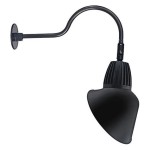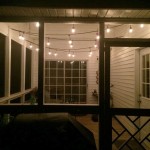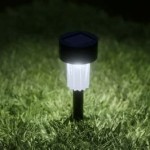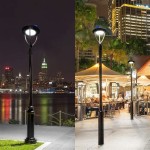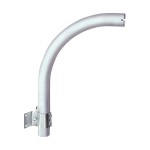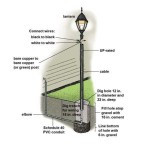Lights for Outdoor Steps
Outdoor steps present a significant safety hazard, particularly in low-light conditions. Proper illumination can drastically reduce the risk of trips and falls, ensuring safe passage for residents and visitors alike. Choosing the right lights for outdoor steps involves considering various factors, including aesthetics, functionality, and safety requirements. This article explores the options available for illuminating outdoor steps, highlighting key features and benefits to help homeowners make informed decisions.
Types of Outdoor Step Lights
Several types of lighting fixtures are specifically designed for illuminating outdoor steps. Each offers unique advantages and suits different architectural styles and landscape designs. Understanding the distinctions between these types allows for a more tailored and effective lighting solution.
Recessed Step Lights: These lights are installed directly into the risers of the steps, providing a sleek and unobtrusive appearance. Recessed lights offer a clean, modern look and are ideal for minimizing visual clutter. They are often low-profile, ensuring they don't protrude and create a tripping hazard. LED versions are particularly popular due to their energy efficiency and long lifespan.
Surface-Mounted Step Lights: For existing staircases where recessed lighting isn't feasible, surface-mounted fixtures offer a convenient alternative. These lights are affixed to the surface of the riser or the side of the steps, providing direct illumination. They come in various styles, from traditional to contemporary, allowing for greater design flexibility.
Post Cap Lights: While not specifically designed for step lighting, post cap lights can be effectively used to illuminate staircases with accompanying railings. Placing these lights on posts at the top and bottom of the stairs, and at intervals along longer runs, provides ambient light that enhances visibility and safety. They also add a decorative element to the landscape.
String Lights: String lights can provide a charming and festive ambiance to outdoor steps, especially during special occasions. While not ideal for primary illumination due to their lower light output, they can supplement other lighting options and create a welcoming atmosphere. Weatherproof and outdoor-rated string lights are essential for safe and reliable operation.
Powering Outdoor Step Lights
Outdoor step lights can be powered in several ways, each with its own set of advantages and disadvantages. Choosing the right power source depends on factors like existing wiring, installation complexity, and budget considerations.
Low-Voltage Lighting: Low-voltage systems operate on 12 or 24 volts and are generally considered safer and easier to install than line-voltage options. They often require a transformer to step down the voltage from standard household current. Low-voltage lighting is energy-efficient and suitable for DIY installation in many cases.
Line-Voltage Lighting: Line-voltage systems operate on standard 120-volt household current and offer higher light output than low-voltage systems. They are generally preferred for larger properties or areas requiring brighter illumination. Installation typically requires professional electrical expertise due to the higher voltage involved.
Solar-Powered Lighting: Solar-powered step lights offer a convenient and environmentally friendly option. These lights utilize photovoltaic cells to convert sunlight into electricity, eliminating the need for wiring. They are particularly suitable for locations where running electrical wiring is difficult or impractical. However, their performance can be affected by weather conditions and the availability of sunlight.
Key Considerations for Choosing Step Lights
Selecting the appropriate outdoor step lights requires careful consideration of several factors to ensure optimal functionality, safety, and aesthetics.
Brightness and Color Temperature: Adequate brightness is crucial for safe navigation. The lumen output of the lights should be sufficient to illuminate the entire step surface. Color temperature also plays a role in creating the desired ambiance. Warmer color temperatures (around 2700K) create a more inviting atmosphere, while cooler temperatures (around 5000K) offer better visibility.
Weather Resistance: Outdoor step lights are exposed to the elements and must be durable enough to withstand rain, snow, and temperature fluctuations. Look for fixtures with a high Ingress Protection (IP) rating, indicating their resistance to moisture and dust. A rating of IP65 or higher is recommended for outdoor step lighting.
Material and Finish: Step lights are available in various materials, including aluminum, stainless steel, and plastic. Choose a material that is resistant to corrosion and can withstand the outdoor environment. The finish should complement the surrounding architecture and landscape design.
Motion Sensors and Timers: Incorporating motion sensors or timers can enhance convenience and energy efficiency. Motion sensors activate the lights only when needed, while timers allow for automated operation based on predefined schedules.
By carefully considering these factors, homeowners can select outdoor step lights that enhance both the safety and aesthetics of their property.

27 Outdoor Step Lighting Ideas That Will Amaze You

Improve Your Safety With Outdoor Step Lights Georgia Lightscapes

Steps Spot Lights Outdoor Stairs Exterior Step Lighting

Step Lights Brick And Garden

How To Install Outdoor Low Voltage Led Step Lights

Lighting For Garden Steps Outdoor Stair Step

Led Stair Lights Kit Decksdirect

No Fall Guys Please Ideas For Lighting Your Outdoor Steps

Willstar Solar Deck Lights Outdoor Step Led Waterproof Fence Stair For Railing Patio Yard Post And Driveway Warm White Com

Step Up Your Project With Lights Kichler Lighting
